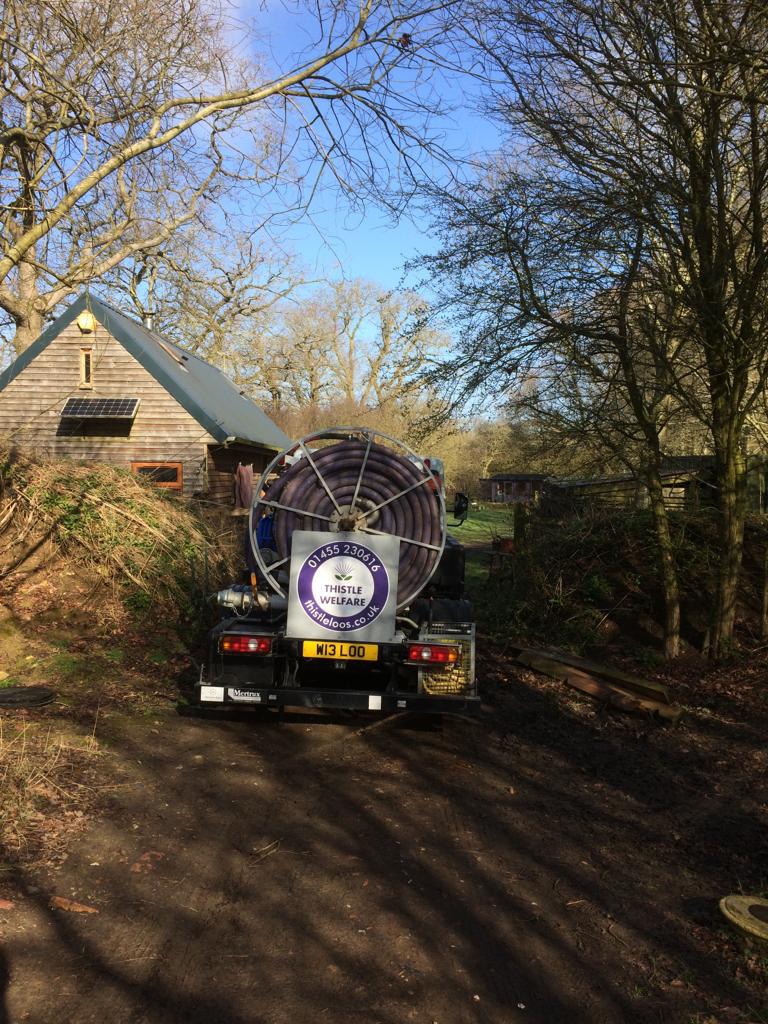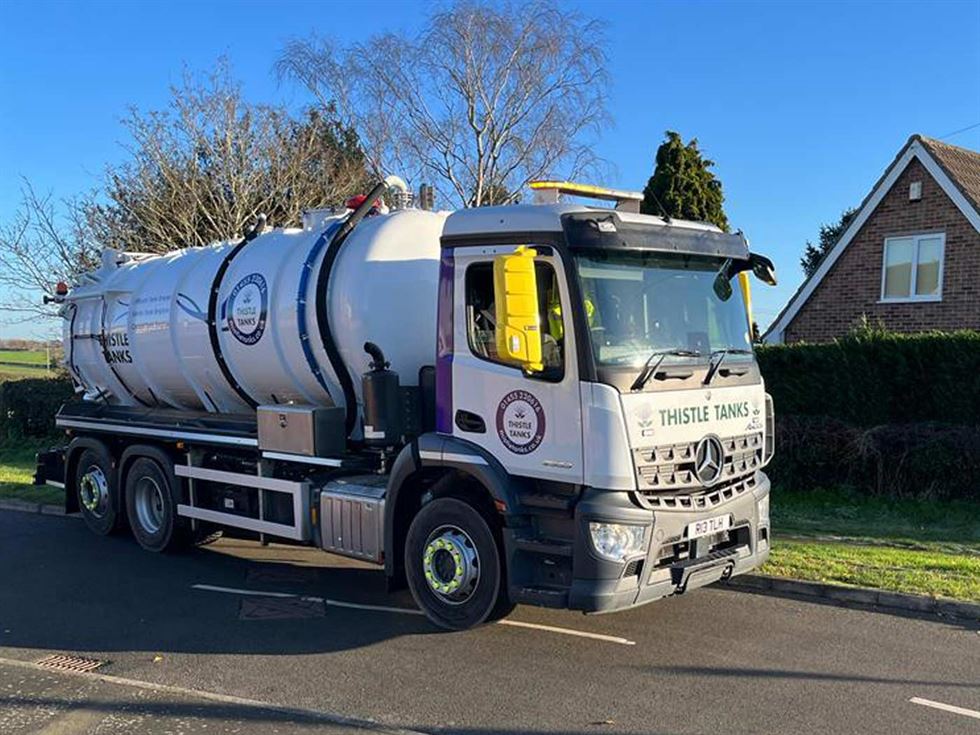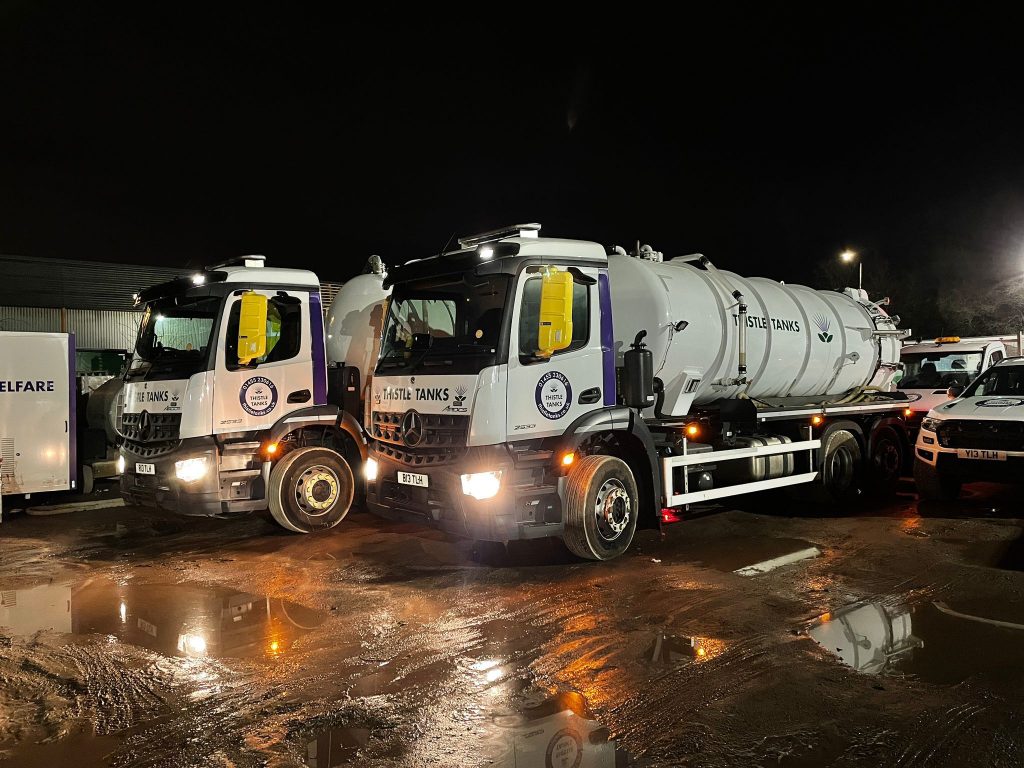If you live in an older property, you may not have access to the main sewerage system. This might mean that you rely on a septic tank instead. That’s not a problem; septic tanks can be just as effective at removing waste as main sewerage systems. However, they do require a little extra septic tank care and maintenance to keep them running smoothly and keep your property in a sanitary condition.
Because septic tanks are located underground, they need to be closely monitored for cracks or breakages which could disrupt the process and cause sewage to flow out into the ground around your home. You also need to perform regular septic tank emptying to ensure they do not overflow.
Common Septic Tank Problems

Septic tanks are an essential part of many homes, but they can experience various problems if not properly maintained. Here are some of the most common issues:
Clogged Pipes and Filters
Over time, solid waste can accumulate in the pipes and filters of your septic system, leading to blockages. These clogs can cause wastewater to back up into your home, resulting in unpleasant odours, slow drains, and even sewage overflow. Regular inspections and septic tank upkeep are crucial to prevent these issues.
Buildup of Sludge and Scum
Septic tanks are designed to separate solid waste (sludge) and fats, oils, and grease (scum) from the wastewater. However, if the tank isn’t pumped regularly, these layers can build up and reduce the tank’s capacity to treat wastewater effectively. This can lead to overflowing, backups, and reduced system efficiency. Understanding how often a septic tank should be emptied is key to avoiding these problems.
Damage to the Septic Tank or Drainfield
Physical damage to the septic tank or the drain field can occur due to various factors, such as heavy vehicles driving over the area, tree roots invading the system, or simply the wear and tear of time. Damage can cause leaks, leading to improper wastewater treatment and potential system failure, increasing your septic tank maintenance cost.
Groundwater Contamination Due to Leaks or Improper Functioning
One of the most serious issues is the contamination of groundwater, which can occur if the septic system leaks or malfunctions. This can result in harmful bacteria, viruses, and chemicals entering the water supply, posing significant health risks. Ensuring that your septic system is functioning correctly is vital to protect both your family and the environment.
Importance of Regular Pumping

Regular septic tank emptying is essential to keep your system running smoothly and to prevent the problems mentioned above. Here’s why it’s so important:
Maintaining the Efficiency of the Septic System
Pumping removes the accumulated sludge and scum, ensuring that your septic system has the necessary capacity to treat wastewater effectively. A well-maintained system runs more efficiently, reducing the likelihood of clogs, backups, and other issues.
Preventing Costly Repairs and System Failures
Neglecting regular pumping can lead to significant damage to your septic system. Repairs to a damaged septic tank or drainfield can be expensive and disruptive. Regular maintenance, including pumping, is a cost-effective way to avoid these problems and prolong the life of your septic system. The cost to empty a septic tank is far less than repairing a damaged system.
Ensuring Proper Treatment of Wastewater Before It Enters the Environment
A properly functioning septic system treats wastewater by separating solids and allowing treated water to safely percolate into the ground. Regular pumping ensures that the system can continue to perform this crucial function, protecting the environment and public health.
Frequency of Pumping
Regular pumping is crucial for maintaining a healthy septic system. Generally, it’s recommended that septic tanks be emptied every 2-5 years. However, the exact frequency depends on several factors, including household size, tank size, and the amount of wastewater generated.
Larger households produce more wastewater, which can cause septic tanks to fill up more quickly. The more people living in your home, the more frequently your septic tank may need to be pumped.
The type and volume of solids that enter your septic system also impact how often pumping is required. Homes that use garbage disposals or regularly flush non-biodegradable items will have tanks that fill up faster. This is because these materials increase the sludge layer, reducing the tank’s capacity to process wastewater.
Tips for Septic Tank Emptying
Proper septic tank maintenance is essential for keeping your system running efficiently and avoiding costly repairs. Emptying a septic tank is a critical part of this routine, ensuring that your tank doesn’t become overwhelmed with waste. From scheduling regular inspections to adopting water-efficient practices, following these guidelines will keep your septic system in top shape.
Regular Inspection
When it comes to septic tank care and maintenance, a regular septic tank inspection should be at the top of your list. You should hire a professional who understands the ins and outs of septic tank care and maintenance to empty your septic tank regularly. If your tank becomes too full, you may experience slow drainage and your home could start to smell if the system gets backed up.
Septic tank emptying should be booked regularly based on the size of your tank and the number of people that use it. A professional will be able to give you more information on how often your septic tank should be emptied. Your tank is checked for signs of wear and tear or cracking, which will flag any concerns.
Proper Pumping
Aside from the regular emptying, septic tank pumping should also be carried out regularly. This process means flushing out your whole system to service it. For a family of up to 4 people, this should be arranged with a professional around once every 3 years. However, for a larger family, it’s best to book septic tank pumping every 1.5 – 2 years to prevent a sewage build-up.
To remember your booking date, try to arrange servicing in spring. This is perfect to form part of your spring servicing regime but also falls in line with the time of year when the ground is dry and not too dusty, making it easier for your maintenance team to access without causing too much mess.
Water-Efficient Practices
Another fabulous tip to keep your septic tank working at full capacity is to conserve water where you can. You can purchase high-efficiency toilets that flush with the minimum amount of water, use shower heads that reduce the water flow and find washing machines that have more water-efficient cycles.
You can even make smaller, more practical changes to decrease the amount of water flowing into your septic tank. How about turning the taps off while you brush your teeth? Or reusing wastewater to water your garden rather than allowing it to flow through the septic tank drainage system.
Waste Disposal Guidelines
To preserve your septic tank for as long as possible, there are certain things that you shouldn’t flush away or wash down the sink. Don’t flush baby wipes or makeup wipes down the toilet. They don’t degrade like toilet paper does and this could clog your pipes and clog up your septic tank so that it will need to be emptied more regularly.
You should also avoid putting grease or oil down the sink. This solidifies at room temperature and sticks to the insides of your pipes and tank, meaning that your water can’t clean itself efficiently.
Drainfield Maintenance
Your drain field is the place where your tank is situated underground and the immediate surrounding area. There are certain tips and tricks to abide by in order to keep this area safe for your septic tank to function correctly.
It’s important to avoid heavy loads, so don’t create a parking area or build a structure on your drainfield. This could not only damage the tank due to the weight but will also cause problems when you’re scheduled for septic tank pumping.
You should also avoid planting flowers or landscaping the area as anything you plant there will need to be moved to empty your septic tank.
Finally, it’s a good idea to divert any other kind of drainage system away from that area to prevent flooding and to keep the area relatively dry so that the tank can be accessed easily.
Signs your Tank Needs Pumping
Keeping your septic tank in good working order is crucial for maintaining a healthy and functional home. While it’s easy to forget about this hidden system, ignoring the signs that your septic tank needs pumping can lead to costly repairs and unpleasant issues. Here are some key indicators that it’s time to schedule a septic tank pump-out:
- Slow Drains: If you notice water draining more slowly than usual from your sinks, showers, or bathtubs, it could be a sign that your septic tank is full. This can also be accompanied by gurgling noises in your pipes, indicating that the wastewater is struggling to flow through the system.
- Unpleasant Odours: A clear sign that your septic tank needs attention is the presence of foul smells, particularly around the drains, toilets, or outside near the septic tank area. This odour is caused by gases escaping from a full tank and should not be ignored.
- Sewage Backup: One of the most serious signs is sewage backing up into your home. This can occur in toilets, sinks, or bathtubs and indicates that your septic tank is too full to handle more wastewater. Immediate action is required to prevent further damage and health hazards.
- Lush Patches in Your Garden: If you notice unusually green and lush patches of grass around your septic tank area, it could be due to leaks from an overfull tank. While it might look pleasant, it’s a sign that your septic system is struggling and needs pumping.
- Pooling Water: Puddles or standing water near the drain field or septic tank area, even in dry weather, suggest that your
Septic Tank Emptying with Thistle Tanks

Regular emptying of your septic tank is essential for maintaining its efficiency, preventing costly repairs, and ensuring that your system continues to function properly. At Thistle Tanks, we specialise in providing reliable septic tank and cesspit emptying services that keep your system in top condition. But we don’t stop there—we also offer effluent tank hire and welfare unit emptying, catering to all your waste management needs.
Our team is committed to offering top-notch service, ensuring your property remains sanitary and your septic system operates smoothly. Whether you need a one-off emptying or a regular maintenance plan, we’re here to help.
Ready to keep your septic system in excellent working order? Request a free quote today! Contact us to learn more about how Thistle Tanks can assist you with all your septic tank and waste management needs. We’re here to provide expert advice and reliable service whenever you need us.

